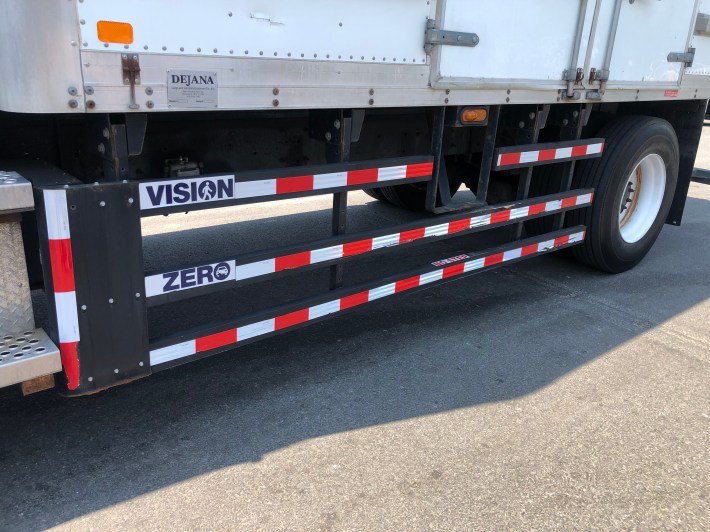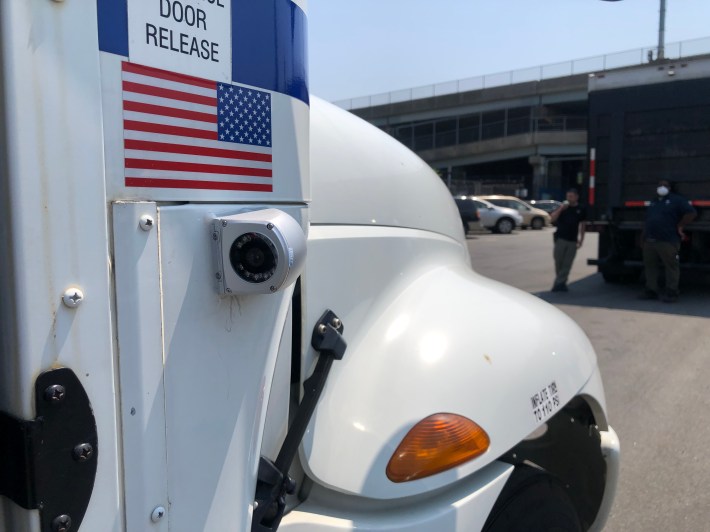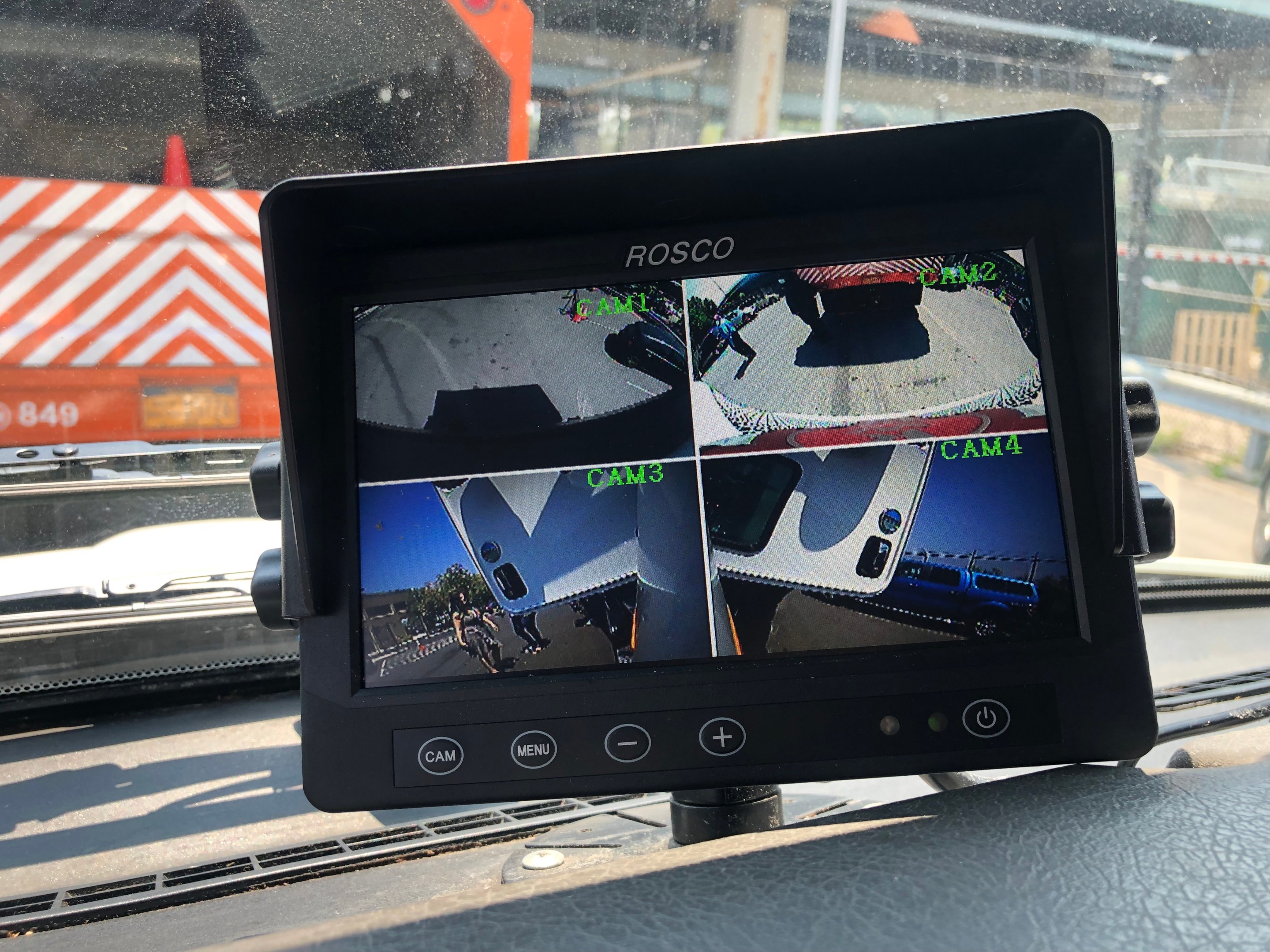The city will make streets safer by installing multiple cameras thousands of fleet vehicles — allowing drivers to see angles that are normally obstructed.
Officials with the Department of Citywide Administrative Services recently showed off to reporters the buses and trucks with the new cameras on each side that would, they said, eliminate blind spots that have previously obscured pedestrians, cyclists and other vehicles. The changes are part of a larger Safe Fleet Transition Plan that includes rear-view backup sensors, truck side-guards, automatic braking, dash cams and heated mirrors. DCAS plans to install 60,000 new devices, which includes 1,500 surround cameras, to its 24,877-vehicle fleet by the end of 2021.
The initial 1,500 cameras will be installed on the 5,742 non-emergency, heavy-duty vehicles.

"The idea is to give drivers a more clear view of their surroundings and being able to reduce obstructions that vehicle design causes, such as not being able to see all the way in front of your vehicle and on the sides," said Eric Richardson, DCAS fleet management officer. "In addition, we have rear cameras to assist in backing up as well as automatic sensors to sense how far away you are from an object when backing up."
Upgrades will also be applied to:
- Department of Correction buses
- Parks Department garbage and forestry trucks
- Housing Authority box trucks
- NYPD rack trucks
- Department of Environmental Protection catch basin trucks
- DCAS supply vans
- Department of Transportation dump trucks.
The technological upgrades are crucial. In the last fiscal year — which ran from July 1, 2019 to June 30, 2020 — city fleet vehicles got into 3,477 collisions — roughly 10 per day, according to agency spokesman Nick Benson. And the agency is at roughly the same pace in this fiscal year, which ends on June 30.
But the vast majority of these collisions are minor (though some still result in some cost to the various city agencies in settlements, such as when a city truck hits someone's mailbox), but pedestrians were struck in 21 collisions and cyclists 13 more in FY20. In the current fiscal year, 10 pedestrians and nine cyclists have been struck.
"Streets are for all road users, not just vehicles, and we are making sure that the vehicles we do have on the streets utilize the best available technology and driver training to keep people safe," said Benson.

The vehicles will feature four cameras — one on each side, one in the front and one in the back. Vehicles will have dash screens that will allow drivers to select specific views while driving. The screens are designed to change to the view the vehicle is turning to. Once turn signal indicator is used to signal a left turn, camera view changes to left side blindspot to ensure safety—same goes for right side.
In the recent demonstration for reporters on Randalls Island, a driver maneuvered around multiple obstacles, and the screen showed the side of the truck in the direction to which he was turning, which eliminated blind spots that can cause crashes. The new camera allows the driver to see directly in front of the truck where the hood of the truck previously blocked much of the view — demonstrated effectively when Benson placed a cone in front of a truck, which was only visible on the screen, but not to the driver's naked eye.
The same demonstration was done for the rear-view camera. A meter indicates how many feet away an object is to the truck while reversing.
But Richardson said technology can only go so far, so DCAS has also trained 70,000 city employees in defensive driving, including 5,000 of those employees completing the course online this past year.
The latest effort to boost street safety comes after the city spent $150 million in settlements last year— 33 percent more than was spent in 2019, Streetsblog reported. Fiscal year 2020 was the fourth consecutive fiscal year that the city had to pay victims more than $100 million to crash victims, according to a report.






